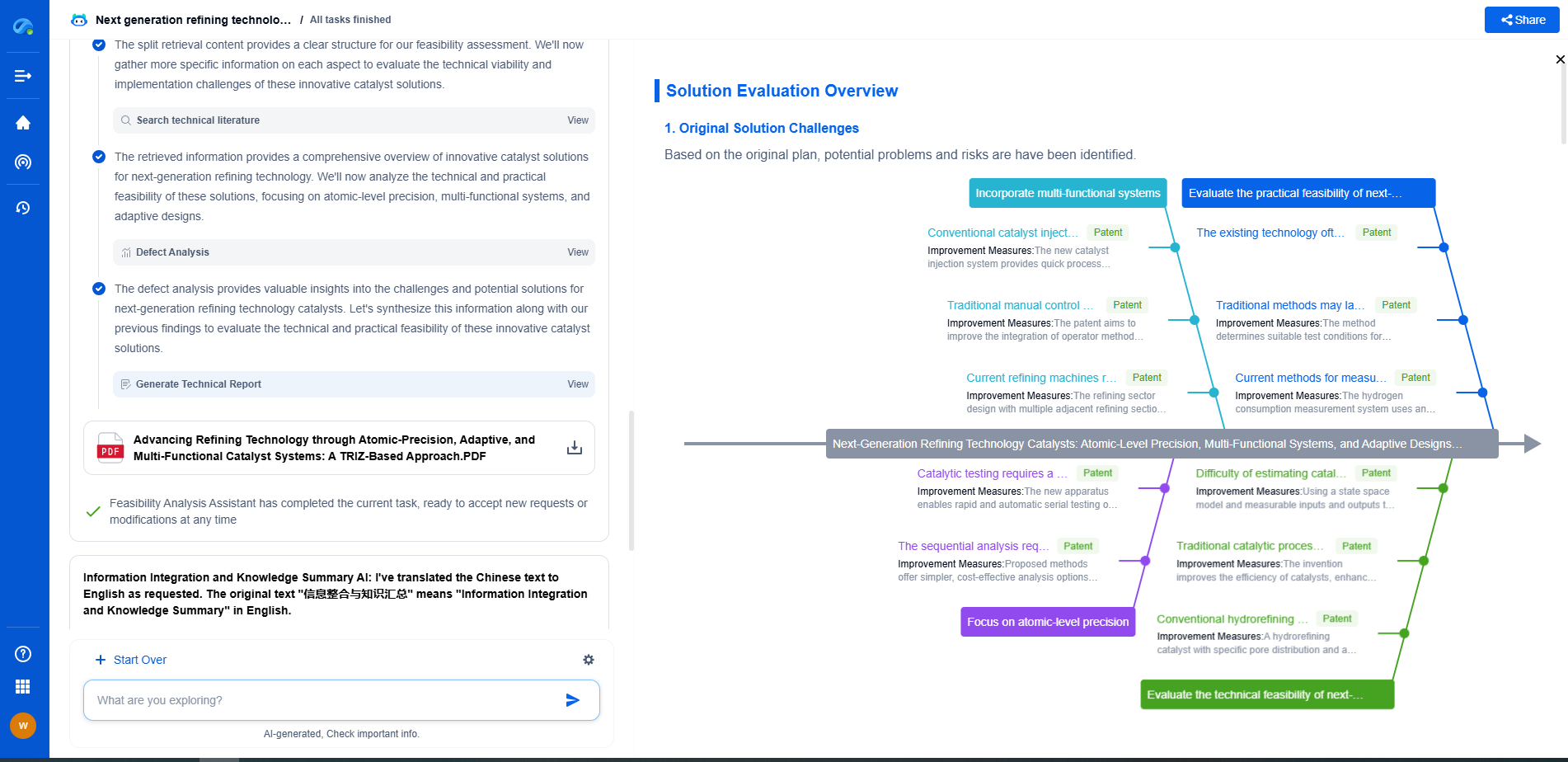Electrostatic vs. Airless Spray Guns: Which is Better for Robotics?
JUN 26, 2025 |
In the world of industrial robotics, spray guns are essential tools for efficient and precise paint application. Two popular types of spray guns are electrostatic and airless spray systems. Each type has its unique features, advantages, and limitations. Understanding these differences is crucial for determining which system is more suitable for robotic applications.
Understanding Electrostatic Spray Guns
Electrostatic spray guns operate by charging the paint particles as they exit the gun. This charge causes the particles to be attracted to the grounded surface being painted. The primary advantage of this method is increased paint transfer efficiency. Since the charged particles are drawn to the target surface, there is less overspray and waste. This efficiency can lead to cost savings in paint materials and reduced environmental impact due to decreased volatile organic compound (VOC) emissions.
Electrostatic systems are particularly effective when painting metal surfaces, as these surfaces can easily be grounded, enhancing the attraction of charged paint particles. The uniformity of the paint coating is another significant advantage, resulting in a high-quality finish that is often required in industries such as automotive manufacturing.
Exploring Airless Spray Guns
Airless spray guns, on the other hand, function by forcing paint through a small nozzle at high pressure. This method atomizes the paint into a fine mist, which is then directed toward the target surface. The high pressure allows for the rapid application of paint, making airless systems ideal for covering large areas quickly. Unlike electrostatic systems, airless spray guns do not rely on electrically charging the paint particles, which can be an advantage when working with non-conductive materials or in environments where grounding is challenging.
Airless systems are praised for their versatility and ability to handle a wide range of coatings, from thin stains to thick latex paints. They are also preferred for projects where a high build-up of paint is necessary, as they can apply thicker coats in a single pass compared to electrostatic systems.
Comparing Efficiency and Precision
When evaluating efficiency, electrostatic spray guns generally have the upper hand due to their ability to minimize overspray and wasted paint. However, airless spray guns excel in speed and coverage area, making them suitable for large-scale projects where time is a critical factor. Precision is another crucial consideration. Electrostatic guns offer superior control for achieving smooth, even coatings, while airless guns provide flexibility in application thickness and are better suited for surfaces that do not require a highly refined finish.
Considerations for Robotic Integration
Integrating spray guns with robotic systems requires careful consideration of several factors, including the type of material being painted, the desired finish quality, and the specific environmental conditions of the operation. Electrostatic systems are often preferred in automated settings where precision and paint savings are prioritized. They are also well-suited for confined spaces where overspray must be minimized.
Airless systems, meanwhile, are favored in situations where speed and the ability to handle various paint types are essential. Their robustness and adaptability make them a reliable choice for robotic applications in industries like construction machinery and large-scale manufacturing.
Conclusion: Choosing the Right System for Your Needs
In conclusion, the choice between electrostatic and airless spray guns for robotics ultimately depends on the specific requirements of the project. Electrostatic systems are ideal for applications demanding high precision, reduced waste, and superior finish quality, particularly on conductive surfaces. Airless spray guns are better suited for projects where speed, versatility, and the ability to apply thicker coatings are prioritized.
By carefully assessing the demands of your painting application and the capabilities of each spray gun system, you can ensure that your robotic setup delivers optimal performance and meets the desired quality standards.
Ready to Redefine Your Robotics R&D Workflow?
Whether you're designing next-generation robotic arms, optimizing manipulator kinematics, or mining patent data for innovation insights, Patsnap Eureka, our cutting-edge AI assistant, is built for R&D and IP professionals in high-tech industries, is built to accelerate every step of your journey.
No more getting buried in thousands of documents or wasting time on repetitive technical analysis. Our AI Agent helps R&D and IP teams in high-tech enterprises save hundreds of hours, reduce risk of oversight, and move from concept to prototype faster than ever before.
👉 Experience how AI can revolutionize your robotics innovation cycle. Explore Patsnap Eureka today and see the difference.
- R&D
- Intellectual Property
- Life Sciences
- Materials
- Tech Scout
- Unparalleled Data Quality
- Higher Quality Content
- 60% Fewer Hallucinations
Browse by: Latest US Patents, China's latest patents, Technical Efficacy Thesaurus, Application Domain, Technology Topic, Popular Technical Reports.
© 2025 PatSnap. All rights reserved.Legal|Privacy policy|Modern Slavery Act Transparency Statement|Sitemap|About US| Contact US: help@patsnap.com

